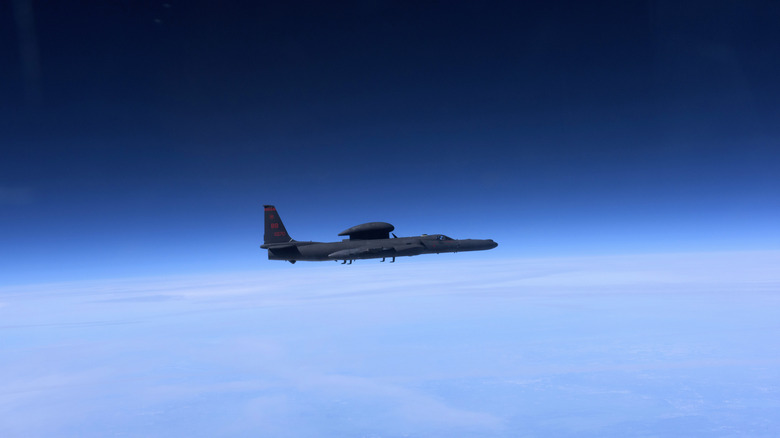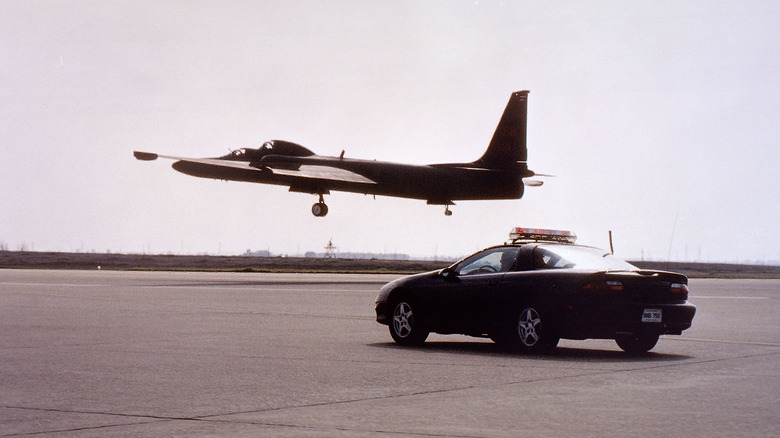What Makes The Lockheed U-2 One Of The Most Difficult Spy Planes To Fly
For most people today, the "Dragon Lady" more than likely conjures up images of Daenerys Targaryen from the hit HBO fantasy series, "Game of Thrones." But long before that show ever aired, and even before R.R. Martin started writing the novels in 1991, there was the U-2 spy plane, also known as the Dragon Lady.
After first taking flight in 1956, the U-2's mission is finally set to end in 2026. Variations of this high-altitude/near-space reconnaissance and surveillance aircraft have been flying for nearly 50 years, gathering critical pictures, signals, and electronic measurements for NASA, the CIA, and the U.S. Air Force. Since it routinely flies at altitudes above 70,000 feet, the pilot must wear a pressure suit, not unlike the ones used by astronauts. However, this is but one of the many difficulties associated with flying this very special plane, which makes it one of, if not the most, difficult in the world to fly.
The U-2 is a lightweight, single-seat, single-engine aircraft with a wingspan of 105 feet. Essentially, it's a jet-powered glider equipped with a bicycle-type landing gear, which requires laser focus and precise control to land safely. In all, early versions of the U-2 were notoriously hard to handle. Pilots had to keep the aircraft flying at a true airspeed of 460 mph to ensure it didn't stall or encounter high-speed buffeting. Their margin for error was a mere seven miles per hour, which pilots often referred to as the "coffin corner." Early models of the U-2 were known for experiencing high-altitude engine flame-outs, a hazard that was corrected with later models equipped with more reliable engines.
Bicycle wheels, space suits, and low visibility collide for a rough ride
The U-2 was originally known as the "Article" or "Angel" during its early development stages by Lockheed, which the CIA commissioned in the mid-1950s. Since the Soviet Union was such a secluded country, the CIA feared it had developed ICBMs capable of reaching the United States, and thus needed a way to confirm this.
Unfortunately for the pilots, the U-2 isn't much easier to control when landing such a beast. In fact, it's quite the opposite. The lift generated by the massive wings wants to keep the plane airborne as it approaches the runway, so it's a literal fight for the already fatigued pilot who just endured a lengthy solo flight. Another feature that limits the pilot's visibility while landing is the extended aircraft nose and "taildragger" configuration. Given all these issues, the pilot needs assistance from a chase car that races down the runway as it lands.
A spotter riding in the chase vehicle calls out the plane's altitude during the last few feet, allowing it to touch down safely. The U-2 pilot must then keep the aircraft straight and level as it slows down enough until it gently falls to one side, where the ground crew inserts wheeled "pogo" supports under the wings, allowing it to taxi back to the hangar without scraping the ground. Despite a litany of safety features and measures, several accidents and fatalities have occurred throughout the years. The remaining U-2 fleet is based at the 9th Reconnaissance Wing at Beale Air Force Base in California.

